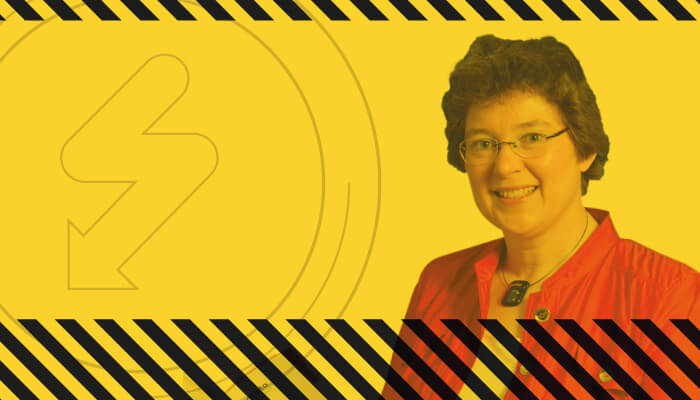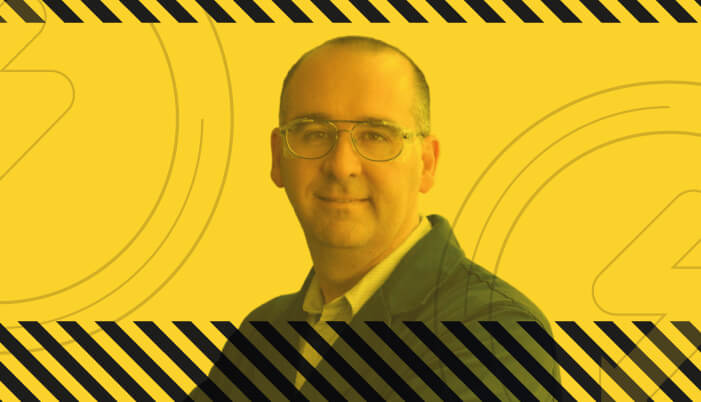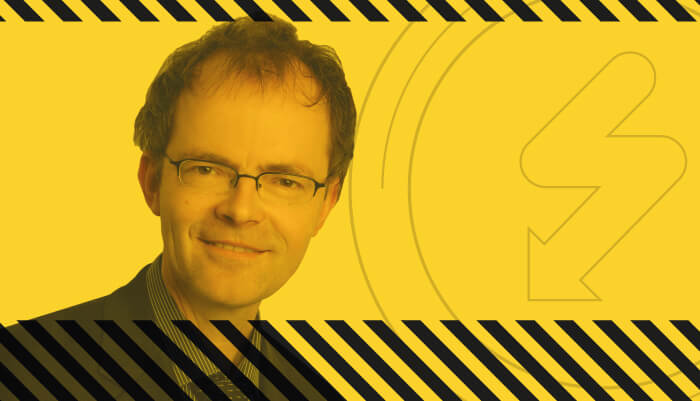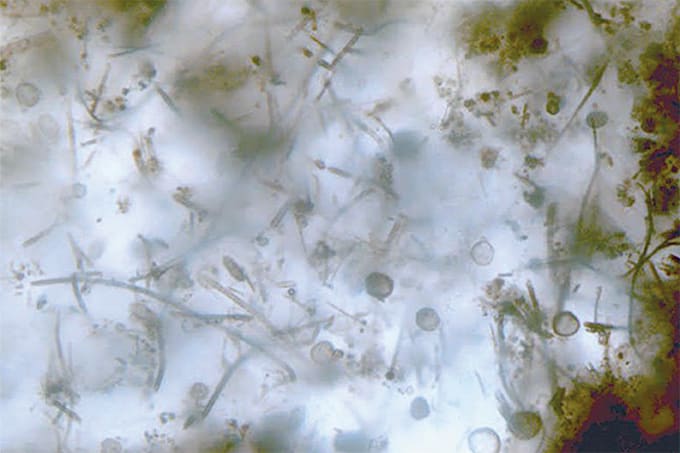Three connoisseurs of capillary electrophoresis - Hermann Wätzig, Cari Sänger and Michael Breadmore - discuss the current state of the art, and what's coming down the tube.
"My focus is on the analysis and characterization of drug substances, products and excipients for small molecules and biopharmaceuticals. Having worked for many years in the pharmaceutical industry I launched my own consultancy (Kantisto) in 2011, which gives me the opportunity to focus the topics I find most interesting – including capillary electrophoresis (CE)! Recently, Kantisto joined an exciting Horizon 2020 Innovative Medicines Initiative project, iConsensus. Our task is to develop CE methods for real-time detection of reagents and quality attributes in a bioreactor."

"I completed my PhD in electrophoresis in 2001 and have spent the last 15 years working on electrokinetic systems as a research fellow funded by the Australian Research Council. Electrophoresis (as a subset of electrokinetics) has always been seen as a replacement to liquid chromatography (LC), but in fact it’s very different. My research is focused on trying to exploit those differences to maximum benefit – not to replace LC, but to do what LC cannot. The GreyScan technology developed by my group leverages the speed and accuracy of CE for airport explosives detection. Our ultimate goal is to develop a µTAS – a holy grail portable sample-in/answer-out instrument – for a range of clinical, environmental, security and industrial applications."

"I’m motivated by my curiosity – and the desire to pass this spirit of curiosity to others. CE has been one of my key areas of focus for many years, along with analytical quality in pharma. In particular, my group concentrates on improving CE for protein assays and purity control; a lot has been achieved in this area but there are still many improvements to be made. More recently, my group developed techniques for protein QC and ligand binding assays – the latter motivated by the success (and fun!) we have had using affinity CE."

HW: It is quite simply the best separation technique for biomolecules. It is precise yet straightforward, provides excellent separation efficiency and allows many options to tune selectivity. Gel electrophoresis (GE) is far more difficult to use for quantitative analyses, and chromatography will always remain something of a black box due to the huge number of intended and unintended interactions possible (silanols, size-exclusion effects, changes in selectivity from adsorbed matrices, to name just a few). There are many interactions on capillary walls too, but these fused silica surfaces are much simpler than the spherical particles of differing size and surface properties involved in chromatography. Every major bioanalytical lab needs CE at least as a reference technique. Bioanalyses are always fairly complicated, and it’s easy to misinterpret the resulting data; therefore, it is essential to not only obtain a good hypothesis using one approach, but also confirm it with a second technique with different properties.
CS: Electrophoresis is more than 200 years old, and from its inception has demonstrated tremendous separation capability. CE combines speed, quantitation, reproducibility, robustness and automation with the fundamental high-resolving powers of electrophoresis. In pharmaceutical analysis this means an additional technique that is fundamentally different from – and therefore complementary to – chromatography
MB: Electrophoresis is wonderful for speed and simplicity. The speed is unmatched by chromatography so CE is a great option when time is important (such as for high-throughput or near-real-time applications) or when you can’t afford the time to send a sample back to the lab. Our work on airport screening for inorganics (and the commercial product, GreyScan) is a perfect example of where you can do with electrophoresis what you cannot do with chromatography or mass spectrometry (MS). Electrophoresis has always been able to separate macromolecules and particles in a way that LC cannot, and as we grow increasingly concerned about the potential health and environmental impacts of nanoparticles, the value of electrophoresis to separate and analyse these will become more evident. In the biological realm, electrophoresis may offer some quite unique capabilities for cells, exosomes, organelles, and perhaps even organisms.
CS: The impact of CE is often underestimated – the Human Genome Project could never have finished so early without the CE at the core of every modern DNA analyzer, and capillary gel electrophoresis (CGE) and capillary isoelectric focusing (cIEF) are part of almost every biologic license application (BLA) submitted today. In small-molecule pharma, several companies have used or still use chiral CE as a technique of choice.
Recently, we developed a capillary zone electrophoresis (CZE) method for the determination of intact virus particles (1), which is faster and more precise than the existing quantitative PCR methods. There are many more examples like this from industry, but usually they remain unpublished.
MB: Pharma and clinical diagnostics are the key commercial strongholds at the moment. It also presents some important capabilities in forensics, and I have hopes it will penetrate into airport screening, but it’s still early days for this application.
HW: I agree that pharmaceuticals are the key application. The major field of application within the pharma industry is monoclonal antibodies, including biosimilars and antibody–drug conjugates. However, CE is making inroads in areas such as vaccines. These can be very complex mixtures of biomolecules and require the best separation efficiency you can get.
CS: The strengths of electrophoresis techniques can be further exploited in areas such as palm-top/handheld instruments. These would bring the lab to the sample, and could be used in home diagnostics, counterfeit detection, explosive detection, quality control in low-resource countries, and more. I would say “the sky is the limit” but I read a paper recently about CE being sent into space!
MB: I believe that electrophoresis will have real impact over the next few decades in environmental sensing – providing spatial and temporal data about our environment that we can currently only dream of. This rich seam of data could inform climate models, increase agricultural productivity while minimizing environmental damage, and provide new insights into the environmental significance of nanoparticles. I also believe that electrophoresis will form the basis of a generation of point-of-care sensors for urgent health applications.
But even this is thinking quite conservatively. One of the areas in which electrokinetics has traditionally been overlooked is sample preparation. Chromatography (liquid–liquid extraction and solid-phase extraction) is the current mainstay, but recent work has shown the potential to purify molecules from complex samples with electric fields – there are even reports of soil remediation with electric fields.
HW: As well as the new avenues that Cari and Michael describe, I see many further possibilities in areas where classical electrophoresis has been and still is used. The many possibilities for tuning selectivity in CE have not been fully employed for protein analysis – for example, using cocktails of reagents to separate physicochemically similar species, and engaging affinity CE.
MB: Improvements in electronics and computational technology will continue to have a considerable impact. High-voltage power supplies as big as your thumb but costing less than US$100 are now commercially available, and open-source controllers (such as Arduino boards) and small processors (such as Raspberry Pi) will enable instrumentation that is dramatically smaller and cheaper. The small CE developed by Mehdi Moini at George Washington University, which clips on the front of a mass spectrometer, is just one example of what might be still to come. This also suggests that CE may become more of an “add-on” to other analytical techniques such as MS, or indeed LC.
HW: Reliable instrumentation will bring about a much broader acceptance. Since the rise of modern CE in the late 20th century, the separation power of CE has been excellent, but high failure rates continued to blight the field. It is only in the last few years that reliable instrumentation has become available, with failure rates as low as that of HPLC. Miniaturization is another development that has brought great advantages – increasing speed by at least one order of magnitude. Typical CE analysis times are in the range of a few minutes, but doing CE on microchips brings the time down to less than a minute – and often just a few seconds. This is particularly attractive if you have a very high number of samples or if you need to survey a process with high temporal resolution.
CS: Ongoing research in the fields of in-capillary concentration techniques and coupling of MS detection to the CE are leading to some real breakthroughs. Miniaturization creates opportunities for more automated sample prep, but could also be an opportunity to overcome some of the fundamental flaws in current instrumentation. For example, electrophoresis is a bi-directional separation technique, but all current instrumentation is uni-directional. So potential is wasted from the start. Affinity CE has shown great promise form the early days of the field. Slowly, the biotechnology industry is catching on, but needs support in translating the concepts to methods. Personally, I would be thrilled to investigate the potential of CE for potency assays as I believe this would greatly enhance precision and speed up methods. One of the most important developments in the implementation of CE is the identification and understanding of Good Working Practices for CE. This is a community effort and the transfer of this knowledge to all users is of major importance for the implementation and future of the technique.
HW: Recently, I have seen less competition between CE and LC; the real competitor is GE. However, with its superior quantitative abilities, CE can compete in many fields; for example, I have seen a lot of protein separations by size shift from SDS-PAGE to CE-SDS. In general, many labs have switched from GE to CE for antibodies and I expect to see the same trend for other proteins.
MB: From what I have seen, CE-MS has the potential to be much more sensitive than LC-MS. The work of Norman Dovichi in the USA is leading the charge on proteomics and showing some exceptional coverage, while Tomoyoshi Soga in Japan and Govert Somsen in the Netherlands are doing the same for metabolomics.
CS: CE-MS and LC-MS are complementary – in pharmaceutical analysis in general and biopharma in particular, we need all the tools we can get. After all, protein characterization is a tough job! All the molecules are unique, so for different molecules (even ones as similar as mAbs), different techniques may be optimal. For example, when characterizing protein charge heterogeneity, the best technique could be ion-exchange chromatography, cIEF or CZE. The is no such thing as one-size-fits-all, although managers and kit-vendors like to believe differently.
HW: Certain separations are simply harder to achieve by LC, such as charge variants of proteins. New interfacing approaches allowing higher sensitivity in the presence of ampholytes in the separation buffer (Christian Neusüß´s group are doing excellent work here) should extend these advantages in future.
CS: The future growth of CE is obvious in some areas and hopeful in others. In the biopharma industry, there is an increasing wish to complement the traditional CE-SDS and cIEF with the additional separation power and speed of CZE. However, the current CE-MS methodologies require MS-friendly CE buffers, and all too often MS-friendly means CE-unfriendly, with electrolyte ions such as ammonium leading to severe electromigration dispersion. I realize it is a big ask, but I challenge those working on the hyphenation of CE with MS to find solutions to make truly CE-friendly electrolyte solutions possible.
In the longer term, I hope that projects like iConsensus result in analytical platforms where CE is embedded in process analytical technology modules. Plus, there is an urgent need for advanced methodologies that are cheap, reliable and transportable for the regulatory and quality control of drugs in underdeveloped and developing countries, and CE is very well suited for the task.
HW: I would not be surprised to see more affinity CE, an area that has been steadily growing in the last years. Affinity CE is an excellent reference technique for other ligand-binding assays, allows affinity estimation for weakly binding systems, and does not require pure substances so it is particularly well suited to early drug optimization.
MB: Perhaps I am too pessimistic, but I think the “golden days” of electrophoresis are gone, though I see it continuing to be the method of choice for very specific applications. That said, “separation sensors” is a space where I think electrophoresis will outcompete chromatography, and if systems fulfil their promise to provide near real-time information about the individual, the environment and the connection between the two, the demand for electrophoresis may end up eclipsing anything seen to date.

HW: The challenge is to boldly continue what has been started in the last few years: improvement in instrumentation and support. It would be great to see more versatile instruments maintaining the same reliability.
CS: One challenge lies within the pharma industry. Managers are always looking to reduce method development times and embrace one-size-fits-all platform solutions. The problem is that the unique physical–chemical and clinical properties that make an effective drug mean it’s unlikely to show uniform properties in our analytical techniques, so we are constantly challenged to develop new methods. That task is made easier for LC by the stream of emails I receive from vendors about LC applications and new columns, but useful application notes for CE are rare. In LC, competition has resulted in more robust equipment and better transferability between different types of LCs, as well as compatibility of different brands of columns with the majority of instruments. We still need to go through this process with CE equipment.
Scientifically speaking, we have resolved many good working practice issues, but many of the less “sexy” areas need more research. For example, there are several publications on the reduction of adsorption of proteins to the capillary wall, but there is still no consensus.
For the regulatory acceptance of any technique, multi-site studies are important, so we need strong collaboration between companies, academia and vendors, to identify both strengths and weaknesses of a method.
And last but not least, we should not underestimate the need for training. Currently, students learn surprisingly little about CE and its use in industry. Good training at universities and in industry is paramount, and needs to cover fundamentals, method development and good working practices.
MB: A challenge for all researchers, not just in this field, is the change in how research funding is allocated. Many academics want to work on “blue skies” research that may take decades to demonstrate value. But funding agencies around the world are increasingly focused on solving specific problems, with little money available for curiosity-driven research. Indeed, researchers are being driven to solve not the most important problems, but those that are financially viable. I believe we need to fund more basic research, and invest more to support translation outside of academia.
References
- E van Tricht et al., “One single, fast and robust capillary electrophoresis method for the direct quantification of intact adenovirus particles in upstream and downstream processing samples”, Talanta, 166, 8–14 (2017).




